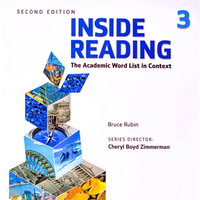7- mind wide open
Until recently, people couldn't look into themselves directly to explore what Gerard Manley Hopkins called our "inscapes." But now we can. With MRIs, PET scans, and many other high-tech mirrors, we can see right through our own foreheads and begin to watch our mental apparatus in action.
The scenario for Steven Johnson's Mind Wide Open is this: Johnson makes himself his own test subject to see what the neuroscientists can show us about our attention spans, talents, moods, thoughts, and drives—our selves. He got the idea for this voyage of self-discovery a few years ago while he was hooked up to a hiofccdback machine. Lying on a couch with sensors attached to his palms, fingertips, and forehead made him feel nervous, and he started making jokes about it to the biofeedback guy. The machine was designed to monitor adernaline levels, like a Iie detector machine. With each joke he made, the monitor displayed a huge spike of adrenaline: "I found myself wondering how many of these little chemical subroutines are running in my brain on any given day? At any given moment? And what would it tell me about myself if I could see them, the way I could see those adrenaline spikes on the printout?" Johnson writes the monthly Emerging Technology column for Discover magazine, and is a contributing editor at Wired. He knows how to make complicated science clear and easy to follow, and his style is cheerful, honest, friendly—and filled with those nervous jokes. In his last book, "Emergence," he explored the ways in which the complicated behavior of brains, software, cities, and ant heaps can emerge from the vastly simpler behavior of their smallest working parts—from collections of nerve cells, bits and bytes, citizens and ants—to become the webs and spheres of efficient mass circuitry.
Here he writes about some of the ways that the behavior of what we like to call our self emerges moment by moment from all kinds of separate tools and workshops in the brain, which neuroscicntists call modules.
Johnson begins with a gift that most of us take for granted: mind reading. Even before we can talk, almost all of us know how to read subtle hints in the faces, voices, and gestures of the people around us. That is, we can do by instinct what neurosdentists are just learning to do with scanners and monitors.
To leam about his own mind-reading abilities, Johnson takes a famous test devised by the British psychologist Simon Baron-Cohen. In the test, you are shown a series of 36 different pairs of eyes on a computer screen. Each pair has a distinctive expression. For each, you have to choose one adjective from a set of four that Baron-Cohen provides: Is this pair of eyes despondent, preoccupied, cautious, or regretful? Johnson finds that he has an instant gut reaction to each pair of eyes. But when he looks harder, he feels less and less sure what he sees.
Our natural ability to read people's faces is outside conscious thought. As with breathing or swallowing, we can't explain how we do it. Baron-Cohen and others believe that the skill depends partly on the amygdala, one of the brain's emotional centers. He has made brain scans of people taking his reading-the-eyes test using functional MRI, which reveals which parts of the brain are working hardest from moment to moment. When most people try to decode the emotion in a pair of eyes, their amygdalae light up. When autistic persons do it, their- amygdalae are much dimmer.
In other chapters, Johnson explores some of the fear messages that are controlled by his amygdala: traumatic fears that were triggered by a near disaster when a storm blew in a big window in his apartment. He explores our brain chemistry, describing some of the natural "drugs" that we give ourselves without knowing it: adrenaline, oxytocin, serotonin, dopamine, cortisol. He learns how to recognize which natural high he is riding, or which bad trip he is enduring. He also learns some useful lessons about the ways our brains' drugs affect our memories. There's also a chapter about his sojourn in a $242-million MRI machine, in which he reads a passage by the Nobel Prize-winning neuroscientist Eric Kandel, and then reads a passage of his own. The test proves that nothing makes a writer's brain light up like reading his own words.
Johnson's preoccupations, the weather systems of his own inner life, keep cycling back chapter after chapter: his horror when that window blew in and almost killed his wife; his moments of tenderness gazing at their sleeping newborn son. As he explores his inner world and the mental modules that help to shape it, we begin to feel that we are right in there with him—and we have a new sense of what it means to be human.
The best chapter is the last, when Johnson analyzes the current view of the mind. It is obvious now that Sigmund Freud's most basic insight was correct—there is more going on in there than we are aware of. This is not new news, but Johnson brings it all alive. He concludes: "Even the sanest among us have so many voices in our heads, all of them competing for attention, that it's a miracle we ever get anything done."
This is an entertaining and instructive ride inward to a place that looks less familiar the better we get to know it. As Johnson says, "It's a jungle in there." "If a lion could talk we would not understand him," the philosopher Ludwig Wittgenstein said. Mind Wide Open takes the point closer to home. If every part of our brain could talk, we would not understand ourselves.

